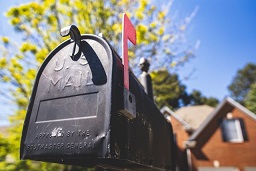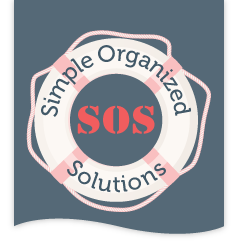 Paper is still probably the biggest challenge for most of us in terms of clutter in our homes. Even though the digital age has eliminated a lot of papers that come our way, if you have a physical mailbox, you are still receiving some paper in the form of mail via the US Postal Service.
Paper is still probably the biggest challenge for most of us in terms of clutter in our homes. Even though the digital age has eliminated a lot of papers that come our way, if you have a physical mailbox, you are still receiving some paper in the form of mail via the US Postal Service.
If you don’t have a system to manage the barrage of paper that your letter carrier delivers, you can become overwhelmed very quickly. To avoid the overwhelm, I encourage you to create a daily routine to manage incoming mail. The process shown below is the routine I set up quite awhile ago and it seems to be serving me well.
My Daily Routine
I’ve designated 15-30 minutes each day to bring in the mail, sort it, open and read it, file the keepers, then shred, recycle or discard unrecyclable items. I’ve done this by actually expanding on my existing routine of bringing it in from the mailbox. By creating a routine, or expanding on my existing routine, I’m dealing with it on a regular basis and it doesn’t pile up.
There are also ways to stop a lot of mail from coming to you so you have less to manage. The best way is to stop it from being delivered to your mailbox. The sections shown below describe each category and options for managing each one to stop, or at least minimize the amount to manage them more effectively.
Mail Categories
Junk Mail:
The US postal service actually calls this ad mail. Advertisements and coupons that come from local stores, restaurants and other service companies fall into this category. This type of junk mail cannot be stopped. Everyone gets these and I don’t know of any way to stop them, however, there is a way to manage this category.
Every week when you receive these ads, discard, or recycle those that you do not want right away. For the ads that you want to keep, replace last weeks ads with the current ones. This is called the one in one out rule and avoids a pile of outdated paper ads.
Catalogs:
Ordering items online will prompt a flurry of email ads, as well as physical catalogs that are delivered to your mailbox. You can easily unsubscribe from the email ads but the best way to stop the physical catalogs is to call the publications and request to be taken off their mailing lists. It may take a while since their marketing campaigns are typically planned far in advance, but you will notice after a while that you are no longer receiving their catalogs.
Magazines:
This category is similar to the catalogs and junk mail categories above, and some of the same rules apply to manage them. If you signed up to receive a magazine, or magazines, you must have decided you wanted to receive them periodically. Some are monthly, others are quarterly or more infrequently. It may have been a good idea at the time, but now you can’t read them fast enough when a new one arrives.
If you decide to unsubscribe, just call the publication and cancel your subscription. If you want to keep them coming, use the one in one out rule as mentioned above to keep from creating magazine mountains.
Bills
Keeping with the strategy of stopping it from being delivered to your mailbox, you can reduce some more mail other than junk mail and magazines. You can setup a lot of your bills to be automatically taken out of an account electronically, or you can schedule the payment.
Online bill pay has become very popular through the internet and has a lot of benefits. One benefit is that payments no longer get lost in the mail. Another one is that you won’t incur late fees because you forgot to mail in the payment, and my favorite, no paper bills! You do, however, have to sign up for paperless billing to keep paper bills out of your mailbox.


